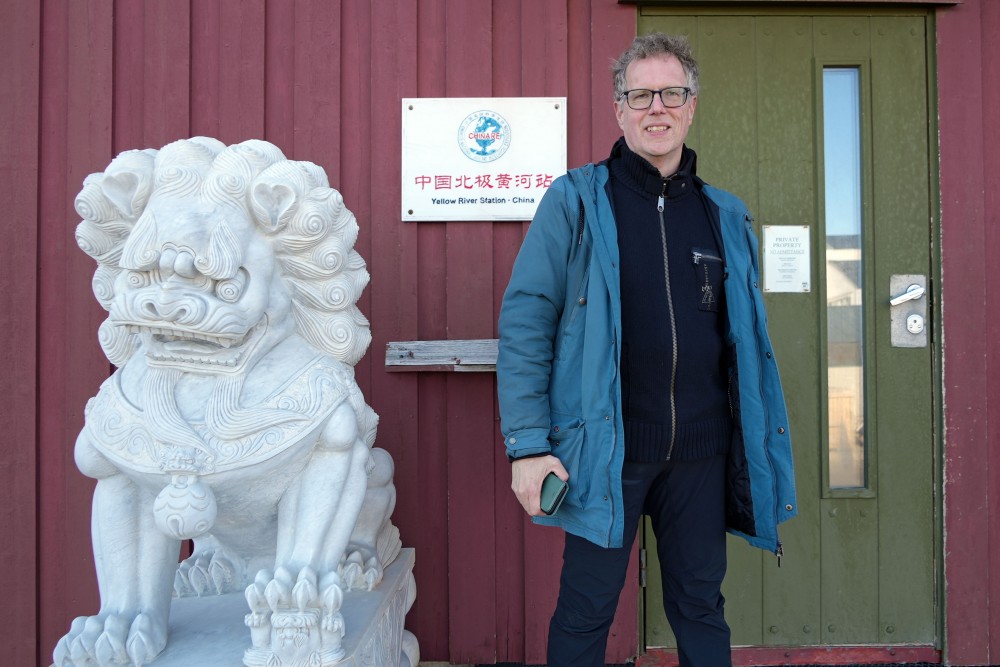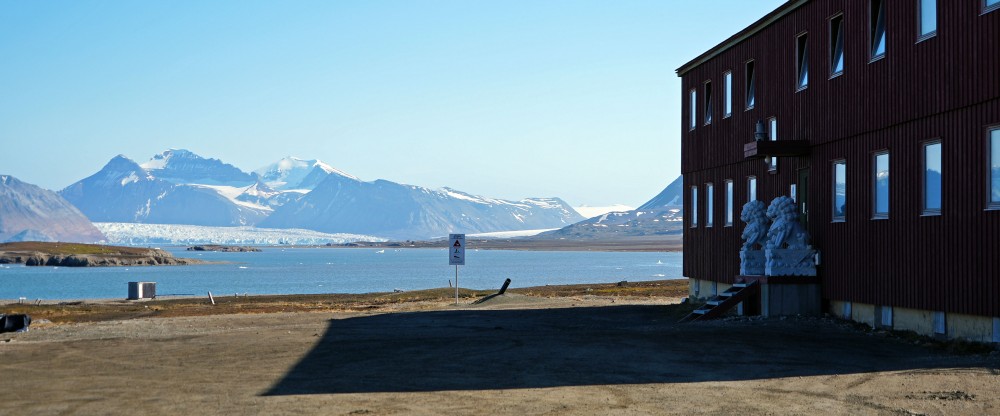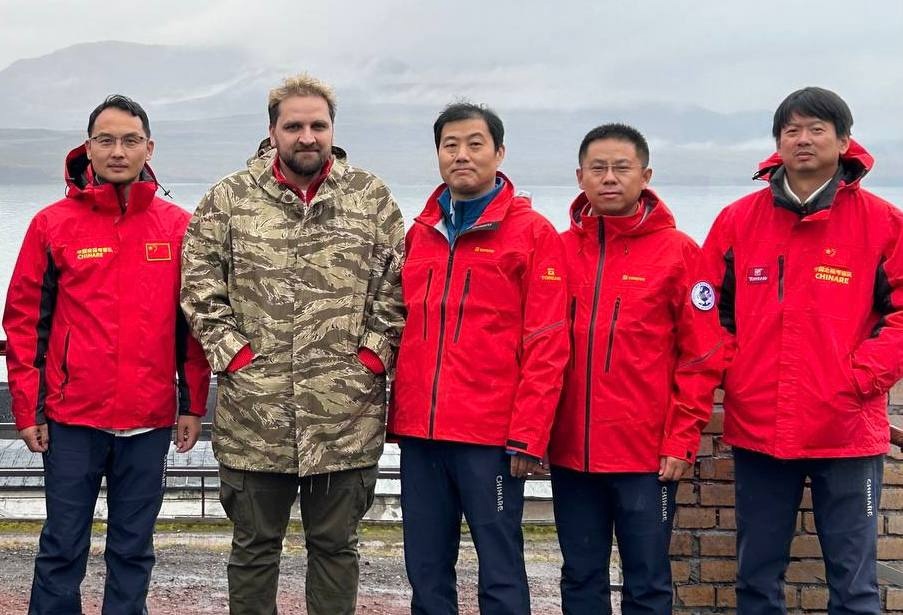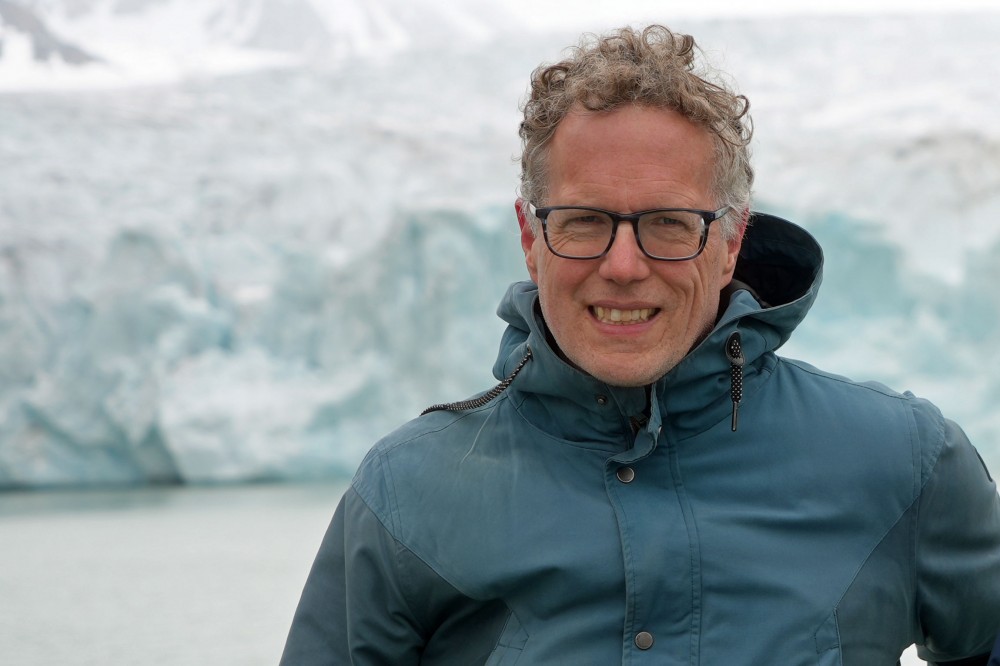Svalbard-research becomes more important for China, professor says
China’s Polar Research Institute agrees to prepare joint Arctic scientific projects with Russian partners. This became clear during a recent visit to Barentsburg on Svalbard.

The Chinese delegation came to the Russian settlement on Svalbard in late August. Here, Arktikugol director Ildar Neverov presented Russia’s plans to establish a scientific centre in Pyramiden. Moscow hopes to attract researchers from BRICS+ countries to team up for science and education at a new centre that yet has to be built.
Professor Marc Lanteigne with UiT – Arctic University of Norway in Tromsø is expert on China’s Arctic interests. He believes Svalbard will become even more important for Bejing under the current geopolitical global power tensions.
“With Chinese research interests being curtailed elsewhere, including in Canada and Greenland, Svalbard is growing in importance for Chinese polar researchers,” Lanteigne says to the Barents Observer.
The professor is one few academics based in northern Norway that speaks mandarin. In Ny-Ålesund on Svalbard, where China for 20 years has operated its Arctic Yellow River Station, Marc Lanteigne easily finds topics of shared interest to discuss.
The station is crewed with scientists from the Shanghai-based Polar Research Institute of China (PRIC).
Lanteigne says China has a growing concern that Norway is seeking to expand its oversight of research activities on Svalbard.
“Beijing is especially critical of Norwegian protocols which call for research on the archipelago to be restricted to natural science,” Lanteigne explains.
“This is seen in China as being against the spirit of the Svalbard Treaty.”
Both China and Russia have expressed desire to engage in social science at the Norwegian archipelago.
In Ny-Ålesund, which is the world’s northernmost year-round research community, more than 20 research institutions from several countries are present. Climate change, glaciology, marine life are important topics studied.
Russia, however, is not present in Ny-Ålesund but runs its own research from Barentsburg. Here, the Kola Science Centre, a branch of the Academy of Science, has a laboratory and offices.
Moscow has pushed for creating a brand new Arctic science centre, and invites partners from what it defines as ‘friendly countries’. Earlier this summer a research delegation from Turkey visited Pyramiden. If they will team up with Russia is unknown.
Ankara is together with Pyongyang the newest signatures to the 1920 Svalbard Treaty.
The Chinese visit to Barentsburg did not either result in any official statements on possible Chinese direct participation in a new Russian science centre on Svalbard. But doors are not closed.
“Russia is perceived as an important partner in China’s ongoing concerns about better understanding the high north. Moreover, with Chinese activities in and around Ny-Ålesund now coming under greater Norwegian scrutiny over dual-use risks, Beijing is not going to ignore the possibility of an alternative research network which Moscow is proposing,” professor Lanteigne says.

This August, diplomates from China’s Consulate General in St. Petersburg discussed with Russia’s Arctic and Antarctic Research Institute about how to boost joint science interests.
“It was discussed possibilities of strategic cooperation between Russia and China in the field of Arctic studies,” the institute writes on its Vkontakte page.
In Antarctica, the two leading BRICS countries already work together.
Svalbard, however, is not the only location for Arctic cooperation. “It was discussed possibilities of implementing joint projects on board Russia’s drifting vessel North Pole,” the text says.
This summer is the fist time China has sent all its three icebreakers into Arctic waters, including the Xue Long 2 that made port call to Murmansk in August after crossing the Arctic from the Bering Strait to the Barents Sea.

“We must develop a system by which Russian and Chinese scientists can visit scientific stations of our countries. Polar regions are a huge cluster for interdisciplinary research and solving common problems in science,” said Ling Tiejun, Deputy Director of the China Arctic and Antarctic Administration according to the post on Vkontakte.
According to the agreements reached, the first consultation meetings between scientific organisations on joint Arctic projects will begin later this fall.
Marc Lanteigne says China is in position to chose cooperation both with a new Russian initiative and at the same time continue to work out of Ny-Ålesund.
“China has the unusual luxury of watching and waiting to see how the possible [Russian] Pyramiden centre develops. This caution is in keeping with Beijing’s attempts to draw closer to Russia in the Arctic, without slamming the door on other Arctic state,” Lanteigne says.

Marc Lanteigne predicts that Beijing will keep the door open for both cooperating with Russia on Svalbard and maintain its current research station in Ny-Ålesund. Photo: Thomas NilsenVladimir Putin had Arctic shipping high up on his agenda when he visited China’s ruler Xi Jinping this spring. In Putin’s delegation was also regional leaders, including Arkhangelsk governor Tsybulsky who discussed port developments and other industrial logistics projects.
It is not known if Putin discussed the planned Svalbard science centre with his Chinese counterpart.
This week Norway’s Prime Minister Jonas Gahr Støre is on official visit to Beijing. How to implement strategies to combat climate changes was high on the agenda, including how the two countries can cooperate on green technology.
Svalbard in particular, but also the entire circumpolar Arctic, is warming nearly four times faster than global average. As sea ice shrinks, more open waters absorb heat giving an extra push the rising temperatures on top of the planet.
Located in Kirkenes, Norway, just a few kilometres from the borders to Russia and Finland, the Barents Observer is dedicated to cross-border journalism in Scandinavia, Russia and the wider Arctic.
As a non-profit stock company that is fully owned by its reporters, its editorial decisions are free of regional, national or private-sector influence. It has been a partner to ABJ and its predecessors since 2016.